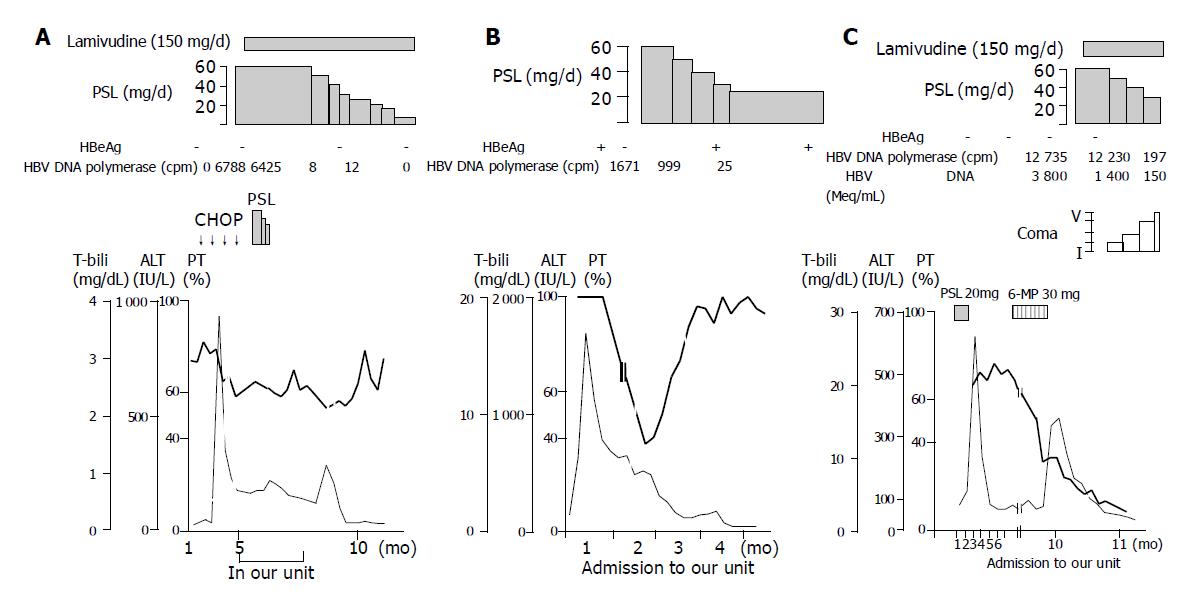Copyright
©2005 Baishideng Publishing Group Inc.
World J Gastroenterol. Feb 28, 2005; 11(8): 1109-1114
Published online Feb 28, 2005. doi: 10.3748/wjg.v11.i8.1109
Published online Feb 28, 2005. doi: 10.3748/wjg.v11.i8.1109
Figure 2 Clinical courses of patient 7 (A), patient 4 (B), and patient 14 (C).
A: Clinical course of a 68-year-old female patient (patient 7). She suffered from non-Hodgkin’s lymphoma and was found to be an HBV carrier with normal ALT, anti-HBe and no HBV DNA polymerase activity. After four cycles of chemotherapy (CHOP therapy), hematologic examination of her bone marrow showed complete remission, but reactivation of HBV occurred. High-dose corticosteroid was administered in combination with lamivudine because her serum HBV DNA titer was high. She gradually responded to the therapy. Thick solid, thin solid and dashed lines denote prothrombin time (PT), alanine transaminase (ALT) and total bilirubin (T-bili), respectively; B: Clinical course of a 27-year-old male patient (patient 4). He had natural reactivation of chronic hepatitis B and responded to corticosteroid therapy with transient HBeAg seroconversion; C: Clinical course of a 47-year-old male patient (patient 14). He suffered from chronic hepatitis B with anti-HBe and ulcerative colitis. He had HBV reactivation and convalesced spontaneously after the withdrawal of prednisolone. Six months later, he had repeated reactivation of HBV with marked prolonged PT and high level of viremia after the withdrawal of 6-mercaptopurine for ulcerative colitis, and was treated with corticosteroid and lamivudine, but did not respond to the combination therapy.
- Citation: Fujiwara K, Yokosuka O, Kojima H, Kanda T, Saisho H, Hirasawa H, Suzuki H. Importance of adequate immunosuppressive therapy for the recovery of patients with “life-threatening” severe exacerbation of chronic hepatitis B. World J Gastroenterol 2005; 11(8): 1109-1114
- URL: https://www.wjgnet.com/1007-9327/full/v11/i8/1109.htm
- DOI: https://dx.doi.org/10.3748/wjg.v11.i8.1109









